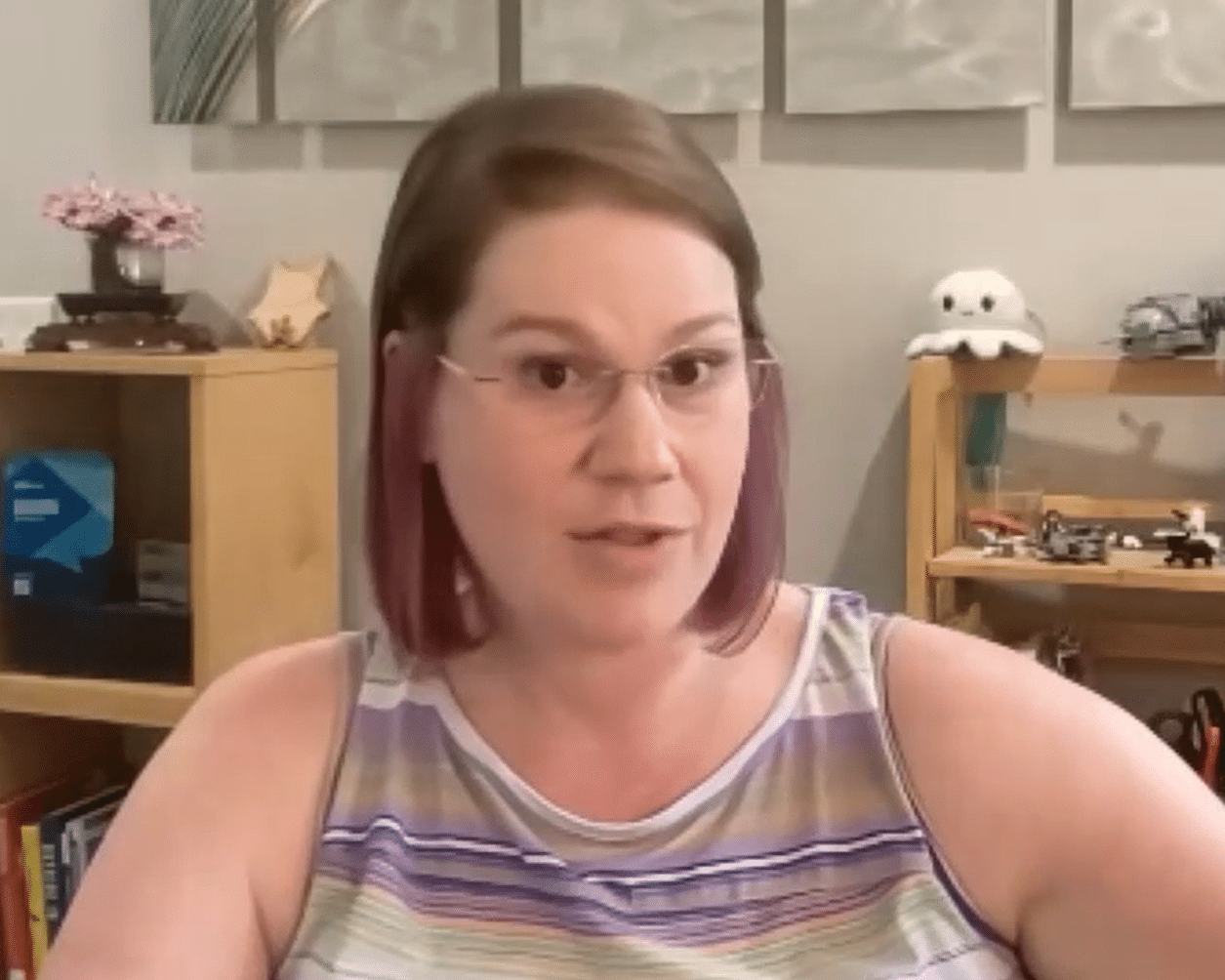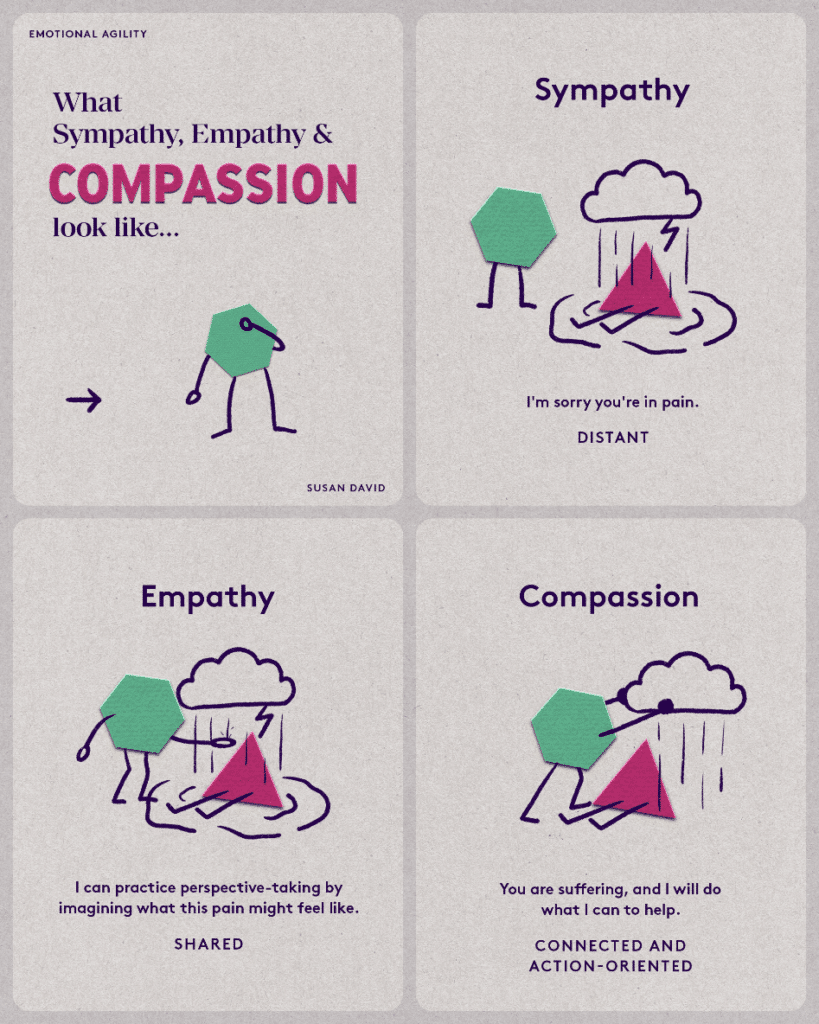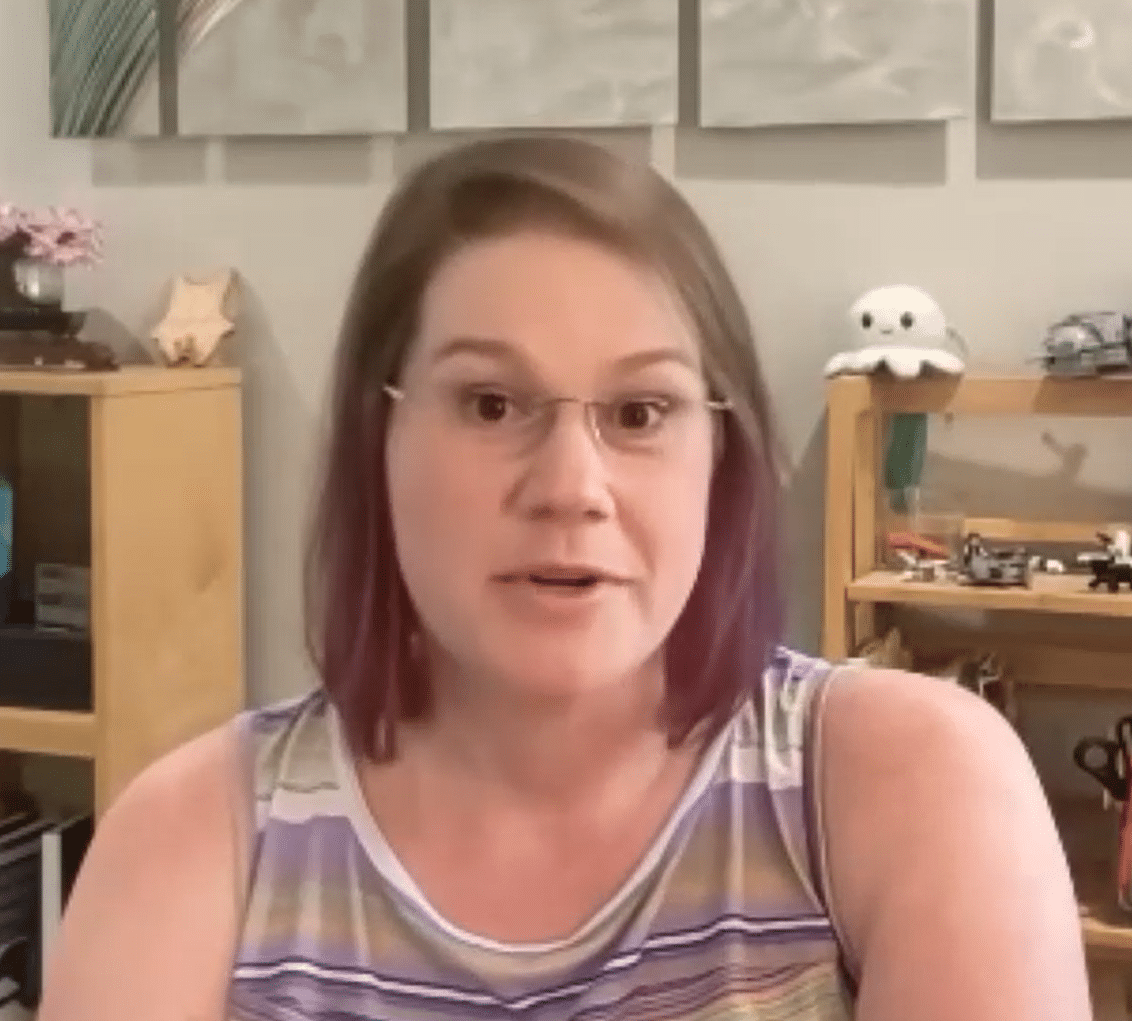Table of contents
Summary
What is empathy? How do you teach it to a company? How do you communicate customer emotions to a company without burning yourself out in the process? These and other related questions are a focus for Ki Aguero, who runs user insights in the newly-formed online business unit at one of the world’s largest car companies. Prior to her new gig, Ki spent many years leading UX research at one of the world’s largest retailers, and before that was a researcher and solutions consultant at UserTesting.
Ki is an active influencer, with outspoken articles on Medium, and a series of posts about her new role published by Dovetail. We asked her for perspective on the UX research profession, and the challenges she’s facing in the very traditional auto industry. Her comments focused on the care and feeding of empathy, and scaling research to non-researchers. This is part one of her comments, focusing on empathy. Highlights include:
- Some people are naturally more empathetic than others, but empathy is a skill that anyone can learn and enhance. For a company to be truly empathetic, you need to help it hone and celebrate that skill.
- Your role as a researcher is to enable empathy among company employees, not to empathize on their behalf. Therefore, Ki forces her clients to watch their own test videos. She won’t do it for them because that cuts them off from empathy.
- To manage the emotional stress of being far more empathetic than your coworkers, meditate and encourage others to empathize.
“Empathy” is at risk of becoming an empty buzzword
Q. You told me recently that empathy is turning into an empty buzzword. Describe what you mean by that, and why it gets you worked up.

A. As far back as 2019, I was working with a director of UX who wanted to dig into customer emotion. And we did some things just trying to study emotion in particular and tease it out. It’s certainly very messy. It’s hard for people to articulate their emotions. It’s weird for them to be asked specific questions about their emotions.
I really loved digging into it. We found some really cool techniques for making it a little easier for users to talk about their emotions. And Janelle Estes from UserTesting helped us come up with some initial ways to try to do that. Some of them I still use.
But the more that we talked about emotion, the more we realized, emotion is only part of the experience. The experience is really a combination of what the person is doing, thinking, and feeling. And if we really want to truly empathize, we can’t just look at the emotion, we have to look at the whole experience. And that’s how you properly empathize.
And so, what had been customer emotion work turned in 2021 into empathy work. And you know, the more that I talked about empathy and studied about empathy, the more I learned that there’s a lot of — how do I say this? — there’s a lot of bulls*** about empathy.
A lot of it.
But also a lot of it is very true, which is why you can’t completely cast it off. Something like 80% of people make a buying decision with their gut. It’s not about them doing the numbers and comparing all of the things. It’s not a robot decision. It’s about, “how do I feel about this?” And so if we aren’t bothering with feelings, we are not properly empathizing and we are going to build a solution that doesn’t actually meet the customer where they are.
What is empathy, really?
So I started researching, what really is empathy? I started digging into emotional intelligence and yeah, some people are naturally really good at empathizing and other people are naturally not as good at empathizing.

I happen to score extremely highly in empathy. It’s just something that comes naturally to me, and I think it comes naturally to a lot of researchers. But I get annoyed when we talk about empathy with the expectation that researchers do it so nobody else has to. That’s the part where I’m getting really frustrated and concerned about UX research as a whole.
There is a great book that I read by Jessica and Jon-Eric Steinbomer, both of whom are UX researchers. It’s called The Heart of UX. It’s about how researchers are really the empathetic heart of the user experience team. It also means that we’re a beating heart. We hurt; we are the first line of defense in customer emotion. And customer emotion can be a jagged thing.
So there’s plenty of stuff about us getting burnt out because we go out there and present an empathetic foot forward. We are trying to empathize radically with our customers, and then we have to turn around and package it more nicely for our stakeholders internally. And they see this watered down version. Hopefully we’ve distilled it. We’re still trying to maintain the story and the spirit of the customer journey and experience, but we start to become the emotional whipping boys in the process. We can’t turn it around and make other people empathize.
I would love to think that my storytelling is that compelling, but I’m talking to audiences that don’t use that empathy muscle and maybe don’t naturally have that empathy muscle. So it’s very hard for me as a researcher to turn around and be like, “Hey, I just empathized a lot with your users. Here’s what I learned” — only to be shut down.
If we want empathy to be anything other than a buzzword, we have to exercise that empathy muscle as an organization. It doesn’t do me any good to be a rockstar empathizer if the eight people that I ran the study for are not also rockstar empathizers who are putting themselves out there to understand where customers are coming from and actually putting the shoes of the customer on their feet and walking around a bit. When I deliver a report, it’s like watching an online video of the shoes being walked in instead. Is that enough to truly empathize?
We researchers become kind of a distancing effect, and it’s the opposite of what we set out to do as researchers. What I’ve gotten really passionate about lately is that we need to build this muscle.
When was the last time that you celebrated that a coworker was empathetic? When was the last time that you complimented someone for being empathetic? Empathy’s such a slippery thing. It’s not a thing that you notice when it’s happening. It’s not a thing that gets celebrated when it happens. It’s just something some people naturally do and some people don’t. And organizations don’t do very much to call it out, recognize it, celebrate it, and encourage it. There are things that I think an organization could do, but I’ve never seen those things really implemented, especially at scale.
So that’s where I’m at. It’s not really a solution necessarily, but that’s a lot of my thoughts about empathy and where it fits into the workplace, or doesn’t.
How to ask people about emotions: Plutchik’s Wheel
Q. You said you worked on some techniques for asking people about emotions.
Share a little bit about those techniques. What are the highlights? What worked best?
A. Robert Plutchik was a psychologist. He created a basic wheel of emotions. It’s got eight spokes. You know, anger is the opposite of joy, that kind of thing. It’s like a color wheel, and it is very colorful <laugh>. It’s not the only version, but Plutchik’s Wheel is a really easy one to Google.
We would show people the image of Plutchik’s Wheel and then ask some emotion-related questions. Like, how did you feel as you were going through this experience? In a perfect world, how would you feel?
When you ask, “how are you feeling?” They go, “good.” They don’t use actual emotions. How often do people actually go, “I’m contemplative today, I’m thoughtful, I’m concerned, I’m angry.” People don’t really label their emotions.
So we used the wheel as a tool to say, “let me give you some starter words. And then let me ask you some emotion-related questions.” That helped people break the habit of “I’m fine. I’m good, I feel bad.” It just gave them a little bit more to work with.
And I have used that not only in testing, but also for a while I was leading a crew of researchers and we had a meeting every Monday. And I always started with, “Here’s our feelings wheel. Where are y’all at this week?”
Empathy is about acknowledging the do, think, and feel. I’d always try to make sure I’m not just asking how you’re feeling, but you’re going to explain why. You know, “I’m really excited because this weekend I was at a birthday party and everyone celebrated me and I felt really appreciated.” People naturally start talking about the do and the think by nature of talking about what they feel.
So we found that really powerful. Not just in testing, but interpersonally. I felt like I got to know my people as humans because I tried to emphasize the importance of bringing your emotional side to work. So we found that to be probably the most powerful thing that I’ve actually been able to implement.
How to increase empathy in an organization
Q. Do you have thoughts on ways to improve empathy within the organization? Or is it impossible for you to do anything about it because it needs to come down from senior management changing the entire culture?
When I started thinking about empathy and emotional intelligence a lot more, I started looking at psychologists in this space. There are psychologists that focus on things like empathy. Susan David wrote the book Emotional Agility and she’s really good at posting online. One of the things that she posted was the difference between sympathy, empathy, and compassion. I really loved this visual:

I really liked that Sympathy was like, “oh yeah, that sucks, but I’m going to keep on walking.”
When a person actually stops and goes, “Ugh, geez, this water is really wet,” that’s empathy. But this depiction of empathy kind of highlights how it’s not enough. I actually think the little hexagon there looks like kind of a dick, sticking its hand under the water and saying, “Aww, isn’t that terrible?” It’s only when he takes the step to start moving the cloud and fixing the situation that the triangle is in that he starts to look like a good guy doing the right thing.
And the same is true of a company. A company can know the customer pain and feel for them and have whole data streams all set up to empathize, but if they aren’t taking compassionate steps to correct it when they see it, empathy is pointless. So when you ask me things like, “what do you think could be done,,” what I think needs to happen is companies need to celebrate the compassion plays.
I think it would be great if they started with empathy and celebrated empathy when it’s happening, but the only way that really is a full story is when somebody does something like, I noticed that this was not great, so I went and did something about it. I would love internal contests that focus on, “What is the biggest compassion play that this company has made? What is the biggest example this quarter where someone saw something that was s****y for a customer and said, we’re going to go fix that?” Maybe it had a direct impact on the bottom line and that’s cool, but that’s not the point of the story. The point of the story is you saw something wrong and you went and did the right thing.

I think leadership teams could be a little bit better about expressing their own emotions. I know that some leaders don’t like to label their emotions or they want to try and stay buttoned up or strong for their team. But they are human beings, they’re allowed to have human feelings. We might actually think better of them as leaders if they showed their human side and admitted when they were having a tough day. And I think that can have a cascading effect down to the individual contributors at some point. Like, this leader is really worried this week, but it’s going to be okay.
Before we started working remotely, when you were in a conference room with three other people, and one of them started fidgeting using their laptop or they were on their phones, or you saw them kind of cross their arms and ball up, you had clues as to their emotional state. You could have a follow-up discussion with them, “Hey, you seemed a little defensive in there, or a little distracted. What’s going on?”
With remote work, you don’t see that. Your coworker is at most a few square inches. And on a bigger call, it’s even worse. And if you are upset or checked out or frustrated with something, how often do you just mute your video altogether? Hide the emotion that you are expressing in your tiny little box?
The landscape of empathizing with each other got so much worse when we all went remote. And I’m still trying to fix that. That’s one of the reasons I built those emotion questions into our check-ins every week. I want to make sure we don’t miss out on this part of ourselves and we bring this self to work. I’m not going to invade your space, but I would love for you to share anything that you feel comfortable sharing as a part of how you’re feeling.
So many corporate cultures, it feels to me, are almost about “don’t bring your emotions to work.” You know, be dispassionate, be logical, and stuff like that. Asking employees in the middle of that culture to all of a sudden start being empathetic toward customers is a big, big lift. It’s counterintuitive to most corporate cultures to actually express compassion and empathy.
How to avoid burning yourself out emotionally
Q. It’s interesting how much of this is about changing culture and thought practices, as opposed to creating a five-point plan that you need to implement. In business, we always go to the deliverables and the plans, but this is much more about culture.
As a researcher, when you start feeling like you’re going to burn out because you’re absorbing the pain of all customers, what do you do about it? How do you avoid getting burned out as the emotional go-between?
A. The Steinbomers’ book was really big for me. I loved that book. They talk a lot about meditation and I’ve been meditating for almost a year now. It really helps with not letting the emotion overrule you.
My favorite example is I’m kind of a worrier and I like to be on time for things. And my husband and I were in our jammies one morning playing a board game and we realized like three minutes beforehand that we were supposed to take our dog to the vet. Normally that would’ve lit a fire inside my chest and made me uncomfortable and I would’ve been stressed out. But by then I started meditating. I still felt that familiar clench in my chest, but then I went, “you know what? I’m going to put some clothes on, you get the dog in the car and I’ll take her.” It just helped me.
I still can’t help but experience that moment of intense emotional reaction, but my ability to think around it and feel past it and get through it got much easier.
So you need to recognize that this stuff is going to affect you, and have methods to manage it, so you’re not trying to prevent yourself from having the feeling. It’s when the feeling happens, here’s how you manage it, and here are the steps that you take in order to reduce its impact on you.
I don’t want to be an emotional middleman. I’ve been doing it for years, and I don’t think it works.
The other change is, I started making people watch their own videos. I can’t keep doing this for other people, as a team of one at my new job. Every designer that comes to me, I’m like, you have to own watching the videos. I set that expectation way up front: I’m going to help you get this test in perfect working order, I’m going to teach you how to get the insights out of it, but you have to watch these videos.
And I’ve set that standard with other people too. I haven’t really gotten to do any interviewing yet because I’m just so strapped. But when it comes to that, I’m thinking about insisting that if no team members show up, I won’t conduct the interview. The team has to be here. It’s not my job to do all the empathizing for you. I want to enable you to get the exposure hours that you need so that you effectively empathize with this customer.
To me it feels more like my job as a researcher is to enable everyone else to enjoy the empathy. I don’t think that anyone can effectively build empathy as strongly by delivering a research report as they can by enabling the people to go have the conversation or listen to the conversation themselves.
I don’t want to be an emotional middleman. I’ve been doing it for years, and I don’t think that it works. I think that empathy is a very human thing and you can’t put a researcher in between you and empathizing with another person. It’s just never going to be as potent or effective as putting yourself right next to the person experiencing it.
This is the first half of a two-part interview with Ki. The second part focuses on ways to influence, and how to safely scale research to non-researchers. If you want to learn more from Ki, check out her articles on Medium, and her blog posts about her new role.
Photo by Eyvn at Pexels.
The opinions expressed in this publication are those of the authors. They do not necessarily reflect the opinions or views of UserTesting or its affiliates.







